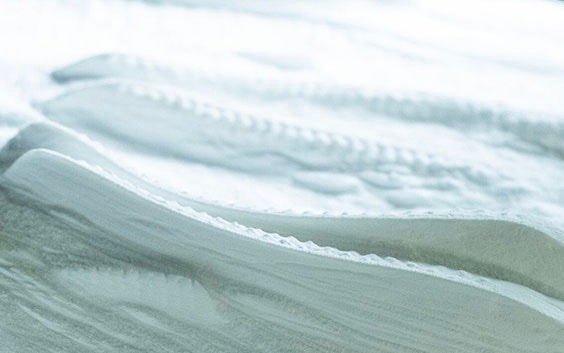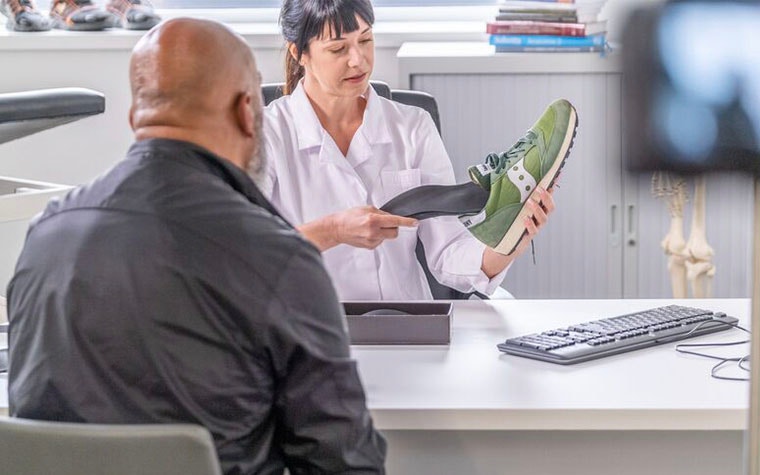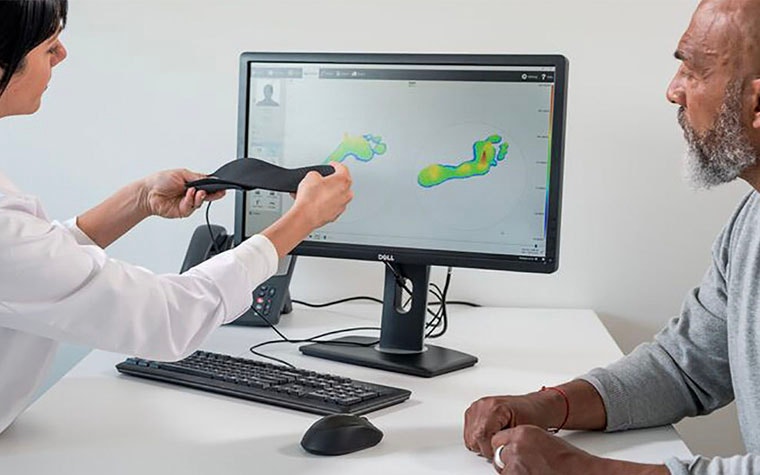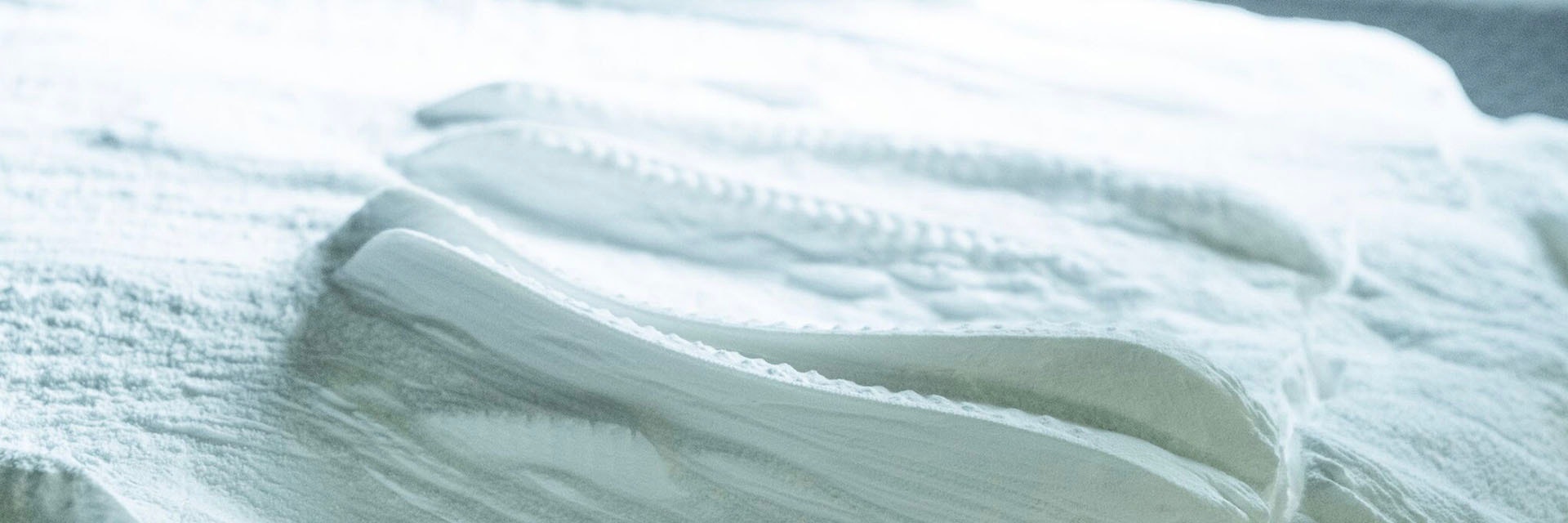EXPERT INSIGHT
Why Choose 3D-Printed Orthotics? It’s All About Personalization

More and more foot experts around the world are turning to 3D printing to create orthotic insoles for their patients — and for good reason. We’re here to explain how this technology benefits everyone, from the experts themselves to the people that wear them.
3D printing has come a long way since it was first commercialized over thirty years ago. It has become a go-to in many manufacturing circles, with a presence in industries such as medical, aerospace, and automotive, to name just a few. Manufacturers working under the strictest quality controls and hobbyists alike have grown to trust and rely on it because of its inherent benefits.
There are many reasons to love it — 3D printing can be cost-effective, help save time, be used to create complex structures, speed up time-to-market, and work for everything from one-off prototypes to series production.
When it comes to applications such as orthotics, some benefits stand out more than others. So, why should you choose this technology?
Make it personal
Every patient is unique. They’re built their own way, they move their own way, and they need orthotics that reflect that. This might be an issue for traditional manufacturing techniques, but not 3D printing. Because the design and printing process is entirely digital, foot and ankle experts can create a unique design, then print several pairs of orthotics simultaneously, all different from each other, making it a valid alternative for mass production.
For patients, this added level of customization lends itself to a perfect fit and happier feet with every step. That’s because every 3D printed phits orthotic begins with a CAD file, with a design based on patient data — dynamic measurements, to be precise. Instead of designing corrections based on a single scan of a patient’s foot, this technique relies on multiple, as well as gait and pressure measurements to create an average.
In doing so, foot and ankle experts can generate corrective insoles that are unique to each patient, based on their movement and the shape of their foot with greater accuracy than ever before — no more ‘one-size-fits-all’ that really fits no one — while ensuring that they remain comfortable, lightweight, and durable.


Accuracy and repeatability
As far as orthotics are concerned, this is a great improvement for foot and ankle experts. It allows them to build corrections into the printed base of the insole itself and apply different levels of stiffness where necessary. Unlike some traditional orthotics, this means corrective pieces are not glued on top of the insole itself, so phits are far less bulky and can be reproduced more easily.
Naturally, this improved design would be meaningless if the final product didn’t match it — but that’s no issue here. The 3D printing technique used to create phits orthotics is accurate down to 0.1mm. It would be impossible to reproduce a pair that was identical to the original by using manual techniques, and any minor differences could have a big impact on performance or patient comfort. With 3D printing, they can rest assured that the result will be the same every time.


Made with expertise
While 3D printing offers a lot of freedom, getting the most from the technology isn’t easy. It requires a deep understanding of the process, from design to execution. Manufacturers must choose from a range of different materials and 3D printing technologies, such as selective laser sintering or fused deposition modeling (FDM), depending on the desired characteristics of their final product. If a product needs to be strong and heat-resistant or flexible and porous, there’s sure to be a combination that’s perfect for the job. Knowing where and when to use each combination comes from experience.
Thankfully, more than 30 years of additive manufacturing experience has been integrated into the Materialise Phits Suite workflow. Production is handled either by our experts at Materialise or approved partners depending on region, ensuring every pair of orthotics is 3D printed and finished to the highest possible standard.
Materialise Phits Suite and 3D printing
Having 3D printing as an integral part of the Materialise Phits Suite workflow really sets it apart for foot experts. They can expect benefits that other technologies cannot offer every time they design phits orthotics for their patients, beginning with the accuracy we mentioned earlier. The final result is guaranteed to match the design down to a margin of 0.1 mm, meaning it fits the foot exactly as intended right out of the box, with less back and forth for both parties. The same can be said for any replacements they print afterward.
For Fried Vancraen, Founder and CEO of Materialise found that Cinderalla fit was one of the main inspirations for venturing into the world of orthotics. He and his children endured the time-consuming process of measuring and changing insoles every year before Materialise Phits Suite was born. Now, they’re more than happy with orthotics that fit all occasions and styles and which, thanks to the durability of 3D printing, they know will stand the test of time.


When asked to describe the difference between traditional orthotics and her custom-made phits, it was this durability that really stood out for marathon world record holder Paula Radcliffe:
“Well, the biggest thing is the durability. They simply don't wear out! You can keep using them, you can run a lot of miles in them, and they basically don't show much damage at all. Only the top cover wears out, and these are easily replaced. The rest stays there the whole time. I think it's more precise than the traditional orthotics because it's exactly the same each time it's created, and it is lighter. It doesn't deform with heat and gets as soft as the traditional ones. Sometimes with the older ones, if it was very warm, they would build up, or they would get a hole or deform a little bit. phits orthotics don't do that!"
Making orthotics more sustainable
But there’s more to 3D printing than strength and style. Those seeking more sustainable options will also be impressed, particularly with powder-based technologies like SLS. In this case, the orthotics would be built layer by layer in a bed of powder, using only the necessary material, with waste reduced even further thanks to the use of 100% recycled powder. Whether your orthotics are printed by Materialise or by another local supplier, you’ll also benefit from simplified supply chains. Your design is made to order and shipped right to you, meaning there’s no middleman or storage necessary, further reducing the environmental impact.
Of course, none of this would matter if the process of actually creating the orthotics was problematic, unreliable, or slow. In reality, 3D printing is nothing if not convenient. As an entirely digital manufacturing process, it can be integrated seamlessly into the digital orthotic ordering workflow — the gait is measured, and the orthotic is designed in the footscan software before being sent to the printers. Foot and ankle experts can handle the entire process in Materialise Phits Suite and rest easy knowing that they’ll receive exactly what they ordered.
Say goodbye to paperwork
An added bonus of this end-to-end workflow is the clear reduction in paperwork. Because the necessary information and data is stored in the software, it has never been easier for foot and ankle experts to follow up on their patients in later appointments. Whether they need to create replacement orthotics or wish to see how an individual’s gait has changed over time, the information they need is never more than a click away.
Naturally, data security remains paramount. All patient data is securely stored in a separate, closed system, ensuring convenience doesn’t come at the expense of privacy.
Your end-users will love it, too
When patients receive their orthotics, many may not be too concerned with how they were made or where they came from. But that can change with Materialise Phits Suite. Experts can use the software’s visualizations, charts, and reports to explain the process from start to finish, including where any potential issues may stem from and how the construction of their 3D-printed orthotic can help resolve them.


And there are plenty of other reasons to be happy about getting your hands on phits, starting with what matters most — comfort. Those who wear them, like British marathon champion Charlotte Purdue, quickly notice the difference that having orthotics shaped to fit their foot will have on how they move.
“When I first wore them, I found that they fit well, and I didn’t have any problems with them,” says Charlotte. “They fit my running style completely. If they didn’t, I’d have had blisters, or it wouldn’t feel right, but it felt like they needed to be in my shoes.”
Thankfully, an insistence on comfort doesn’t mean compromising on durability or performance. Because of their high-quality materials and engineered design, 3D-printed orthotics like phits are both lightweight and strong, meaning they’ll endure heavy usage for years and weigh about half as much as traditional, milled insoles. The soft, comfortable top cover is easily replaced when wear and tear kicks in, extending the life cycle even further, meaning phits aren’t just good for the environment but for the wallet, as well.


A big step forward for orthotics
Much like the analysis and design of orthotics has come far in recent years — it wasn’t long ago that foam boxes were the only available option — the introduction of 3D printing into the workflow is doing a lot to drive the industry forward to the benefit of everyone. It’s a big step forward for those who design orthotics and an even bigger step for those who wear them.
Materialise Phits Suite makes sure taking it has never been easier.
Share on:
You might also like
Never miss a story like this. Get curated content delivered straight to your inbox.
